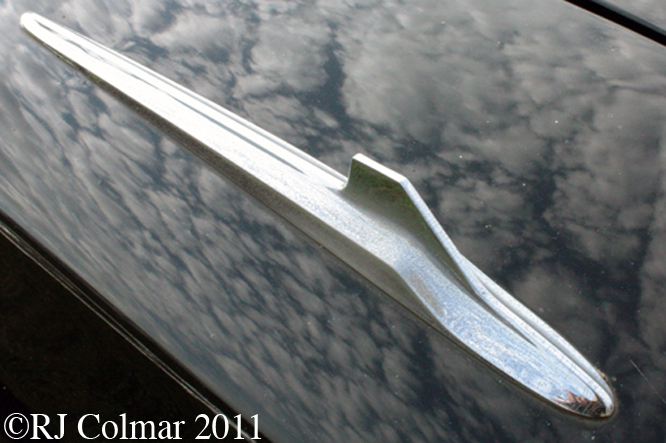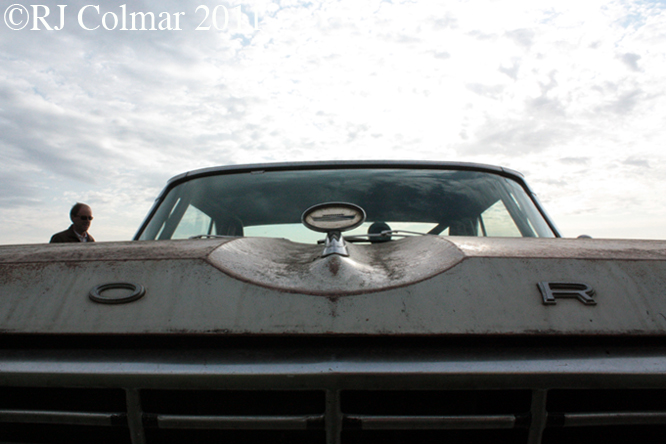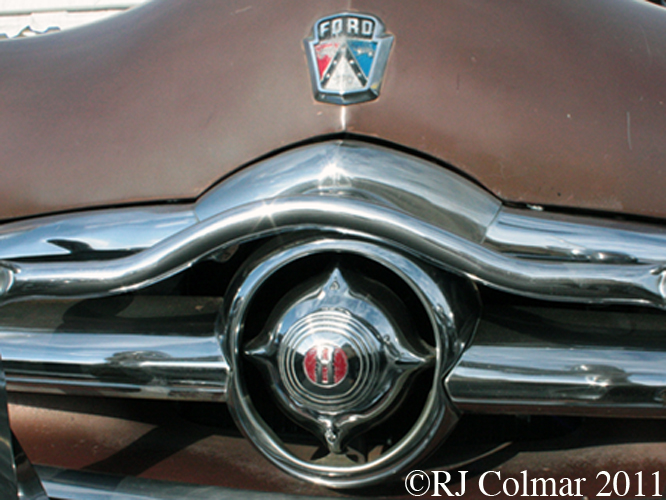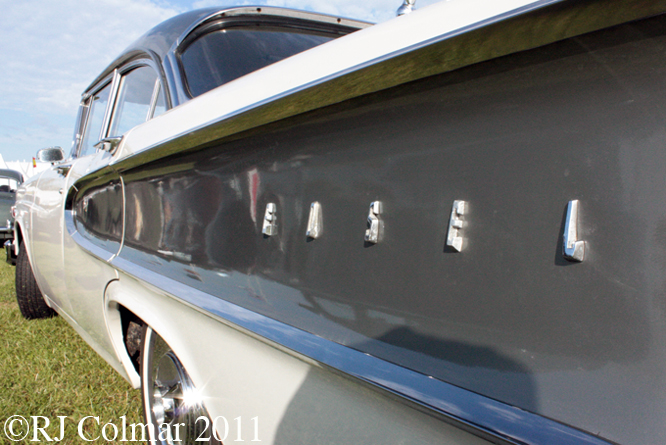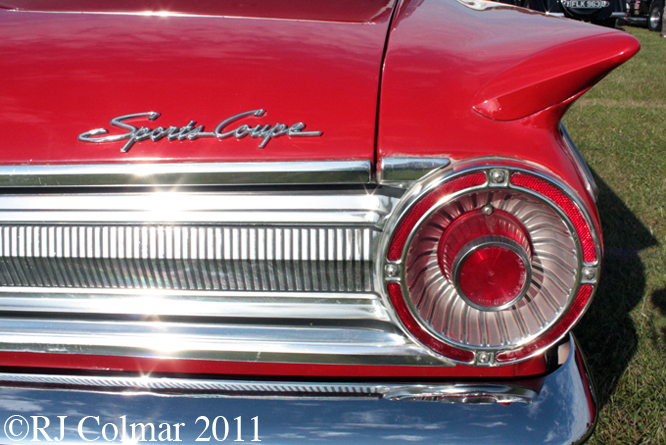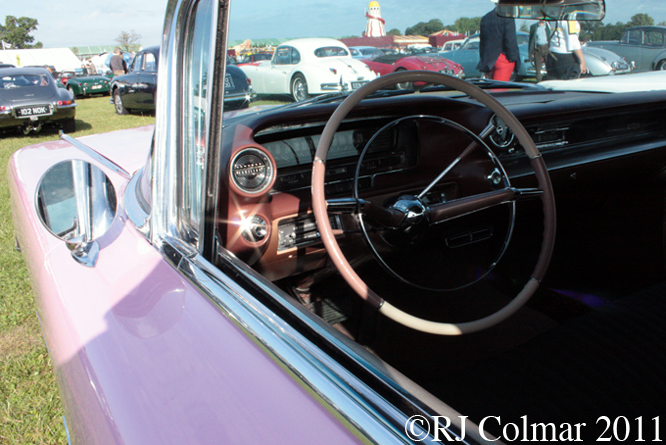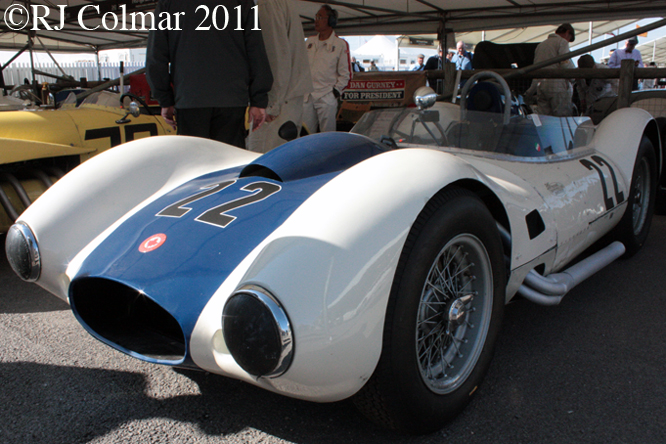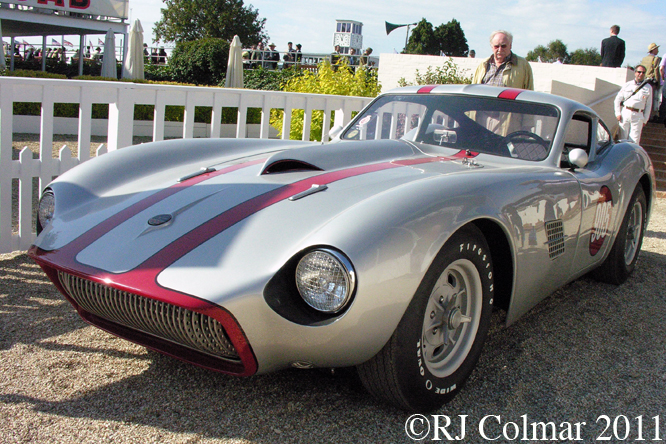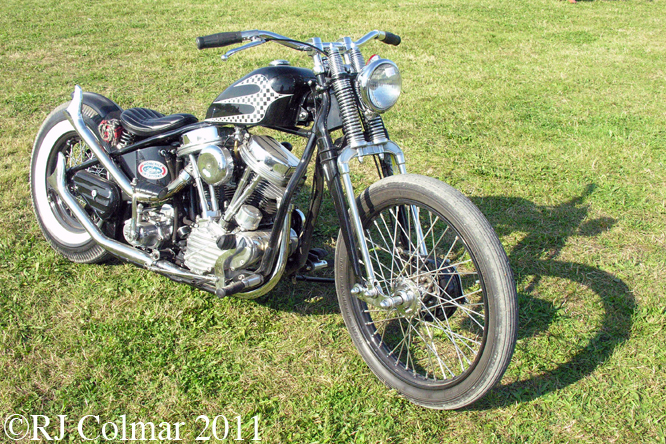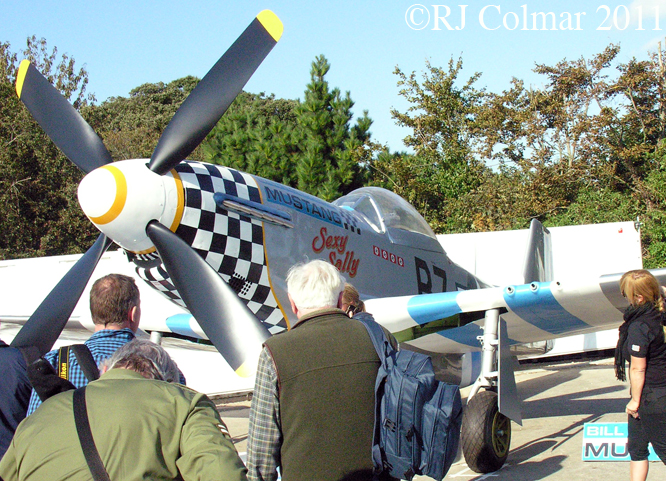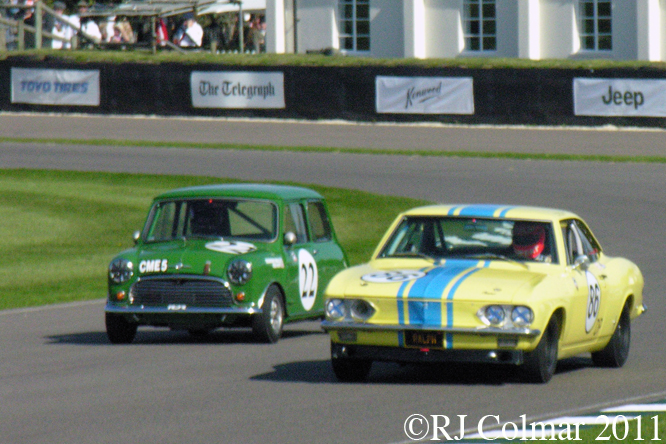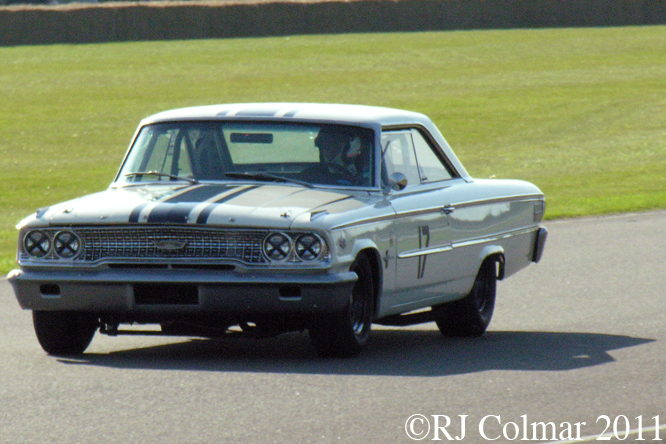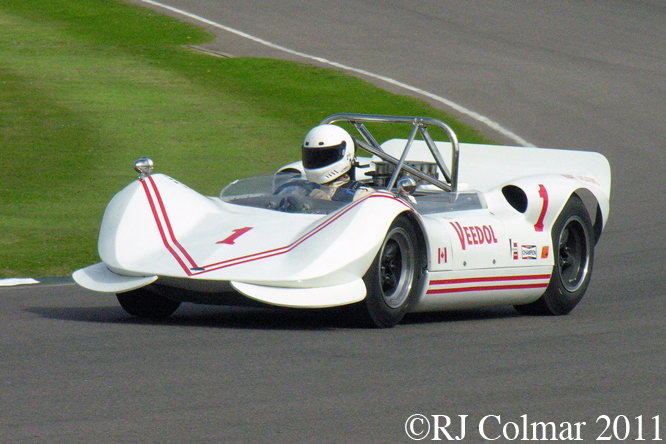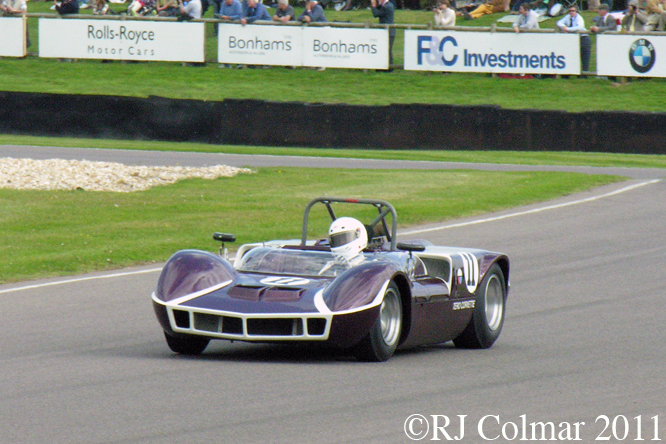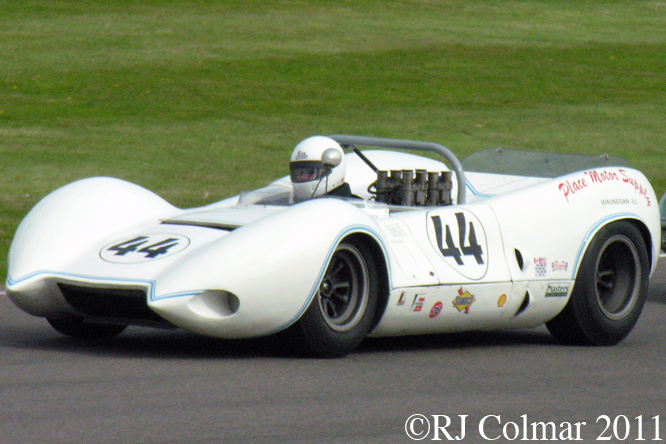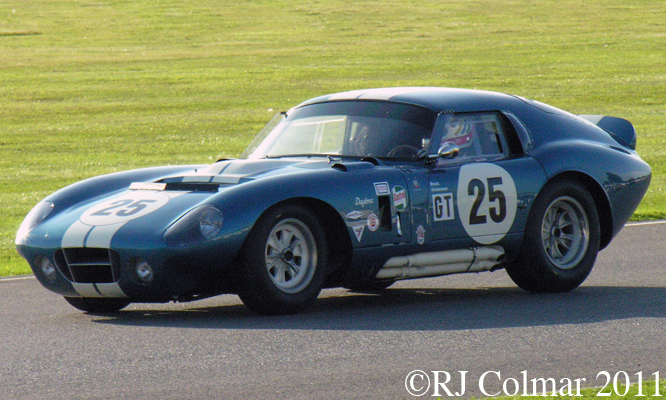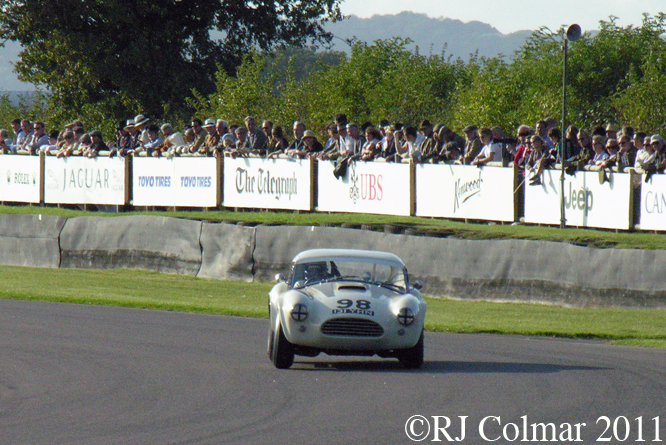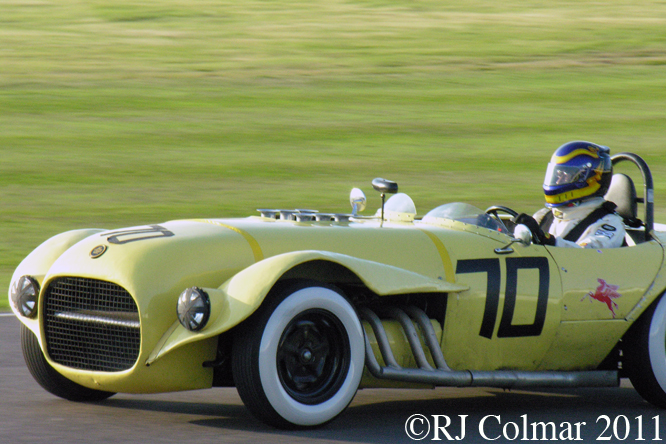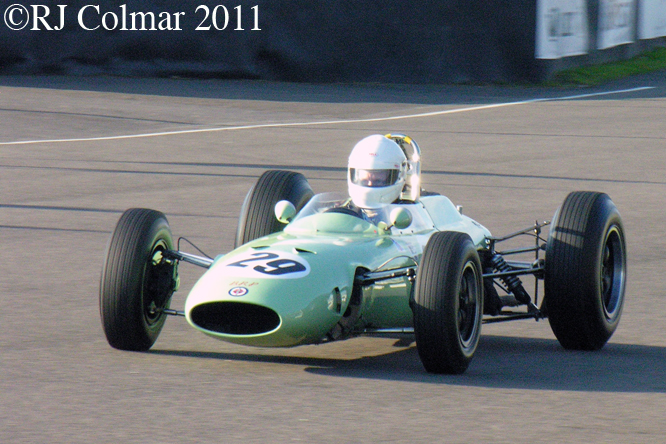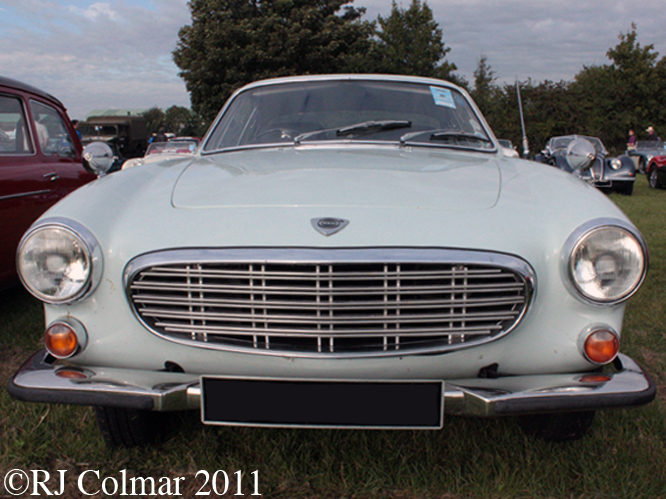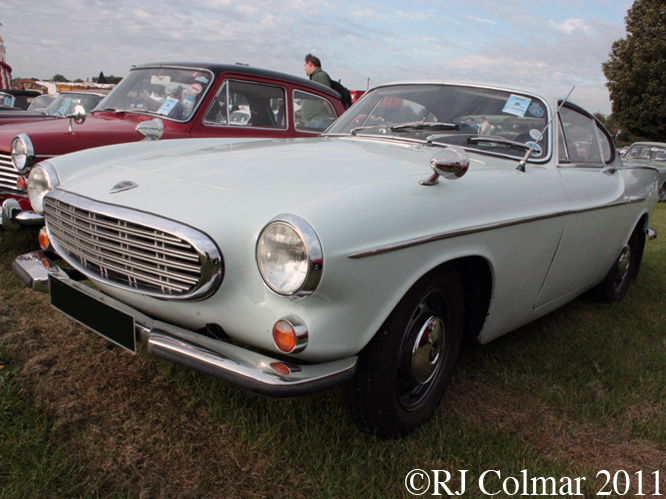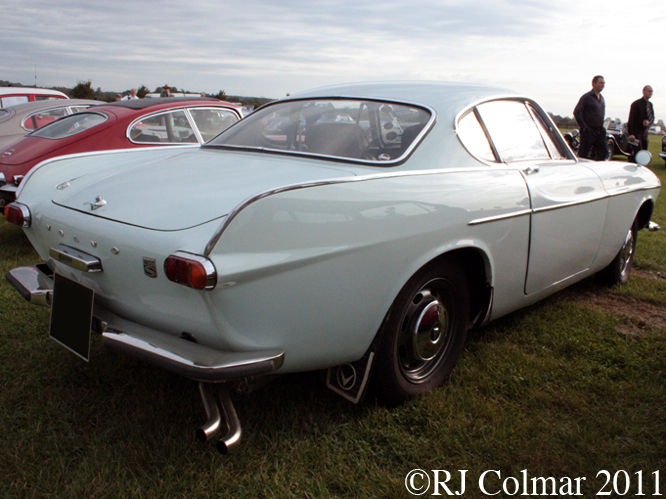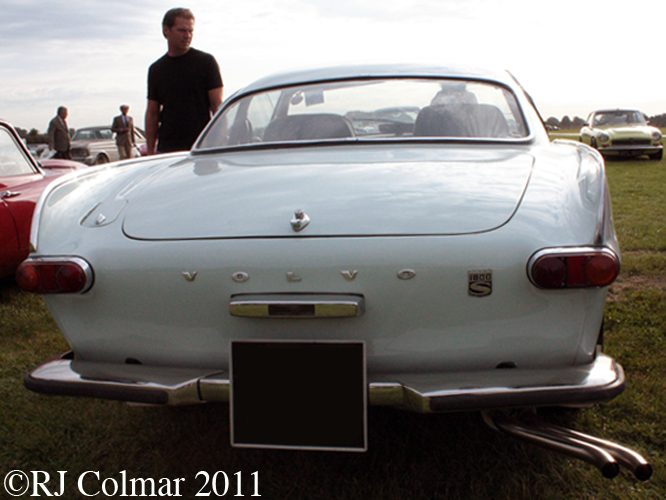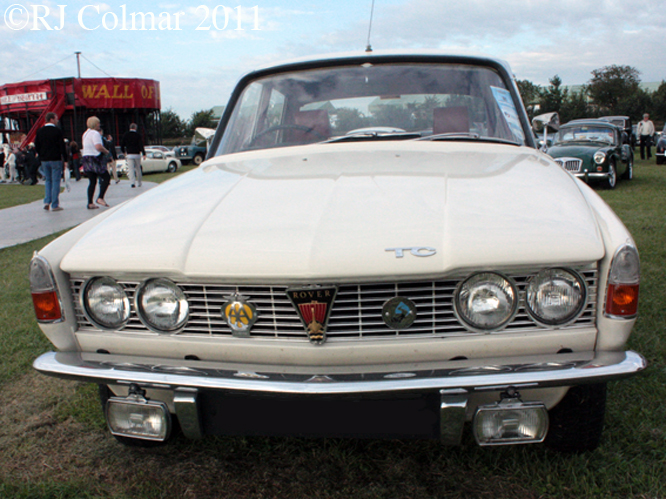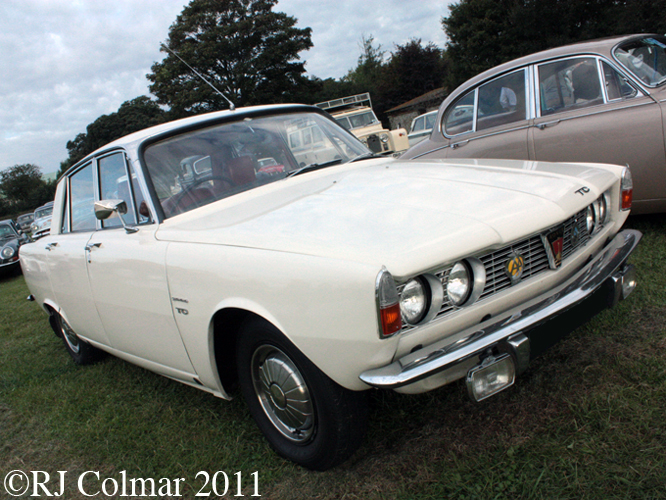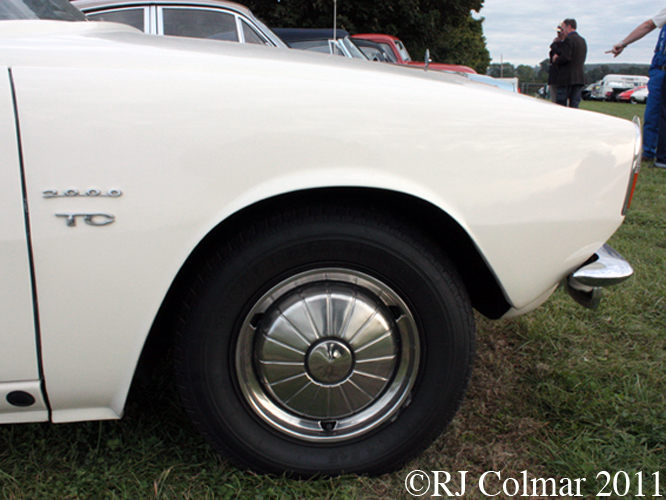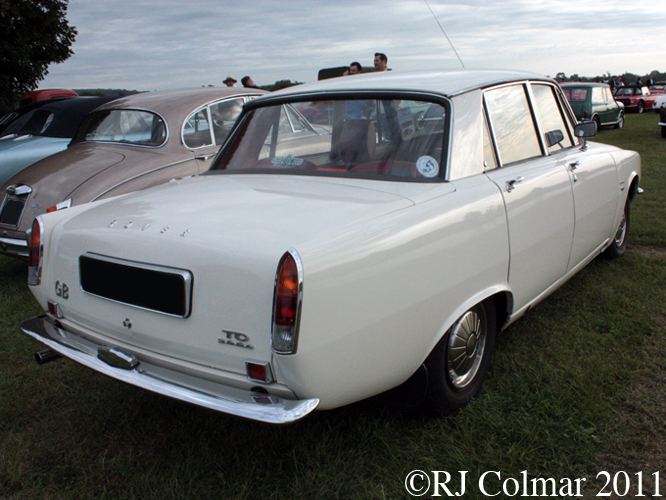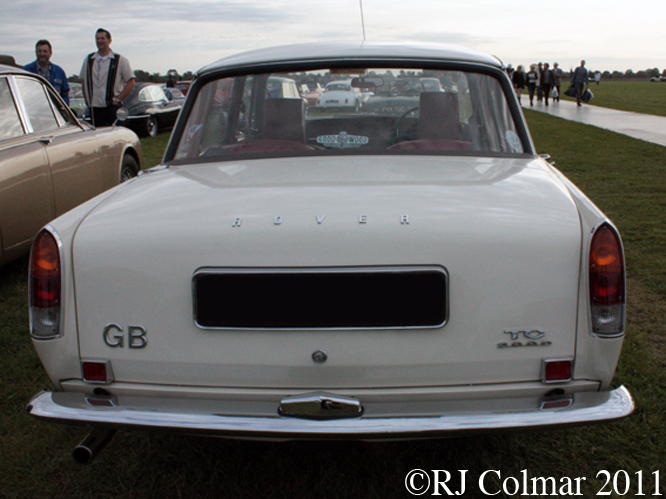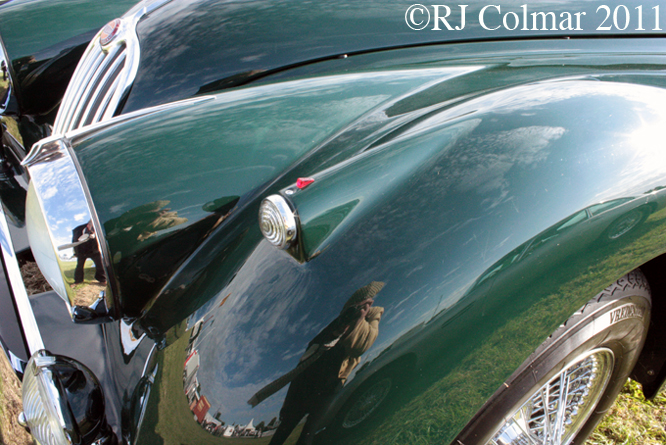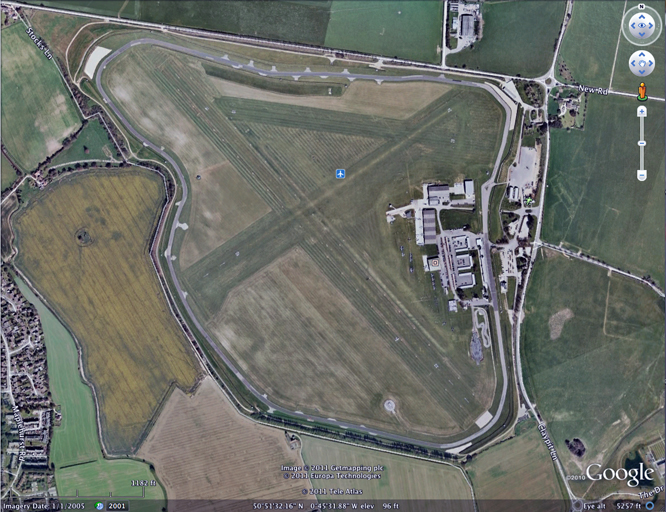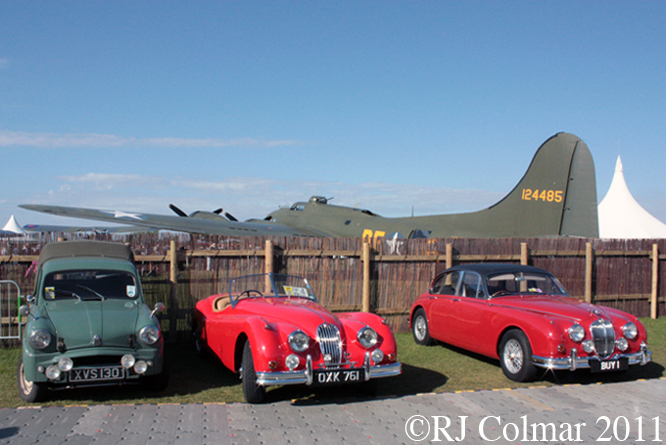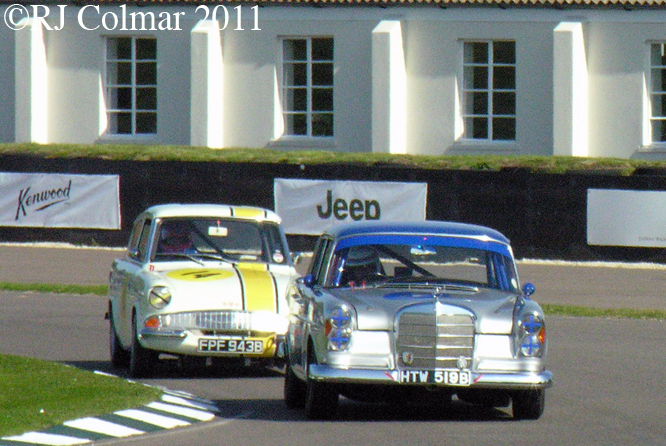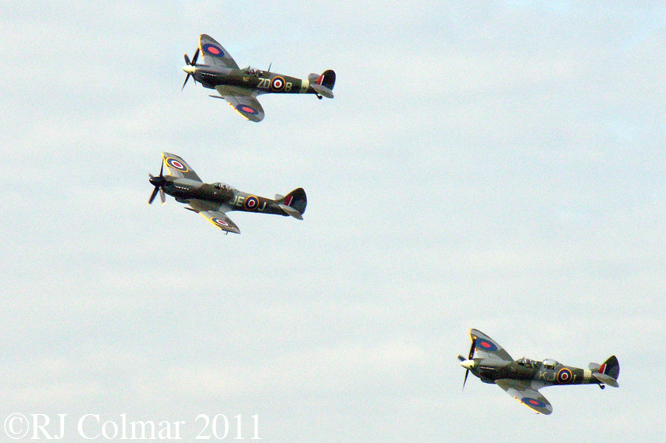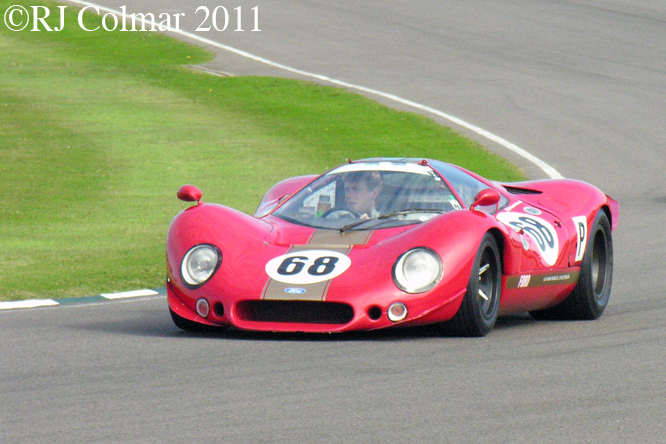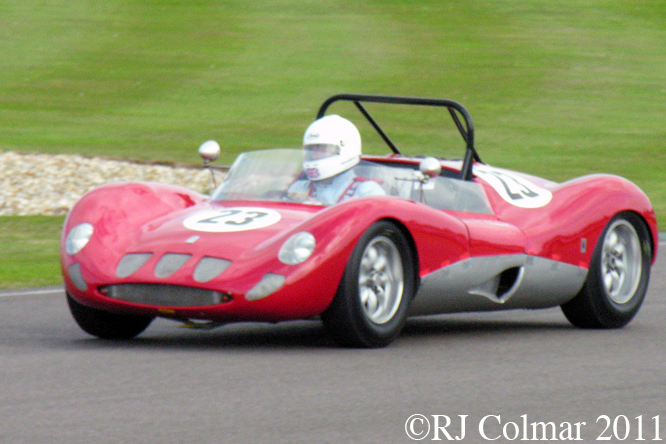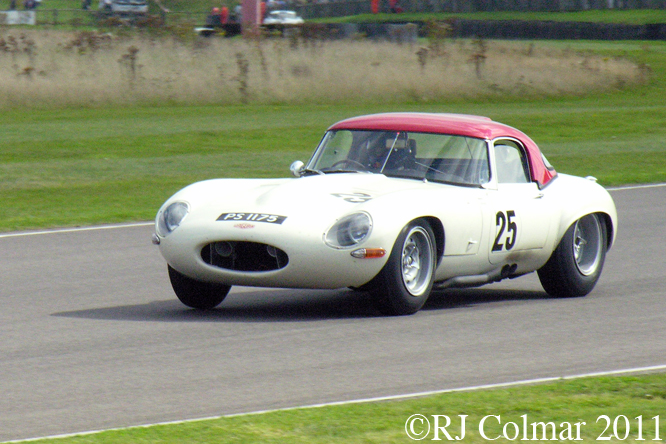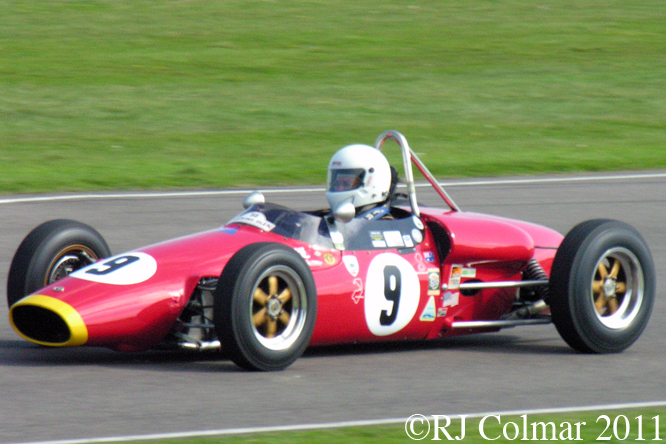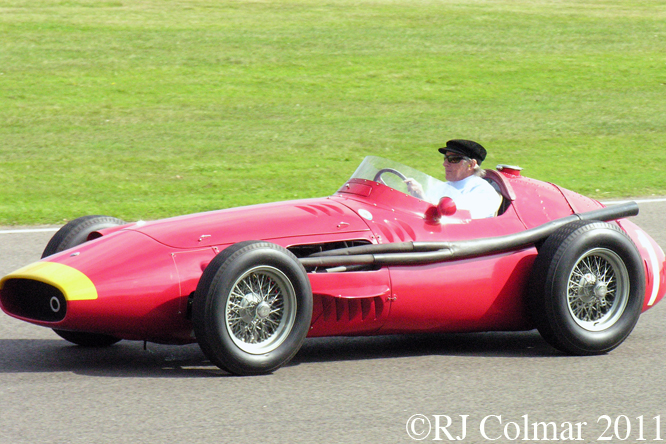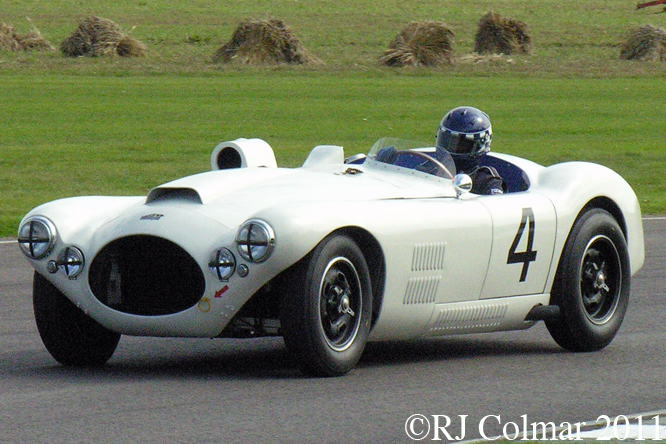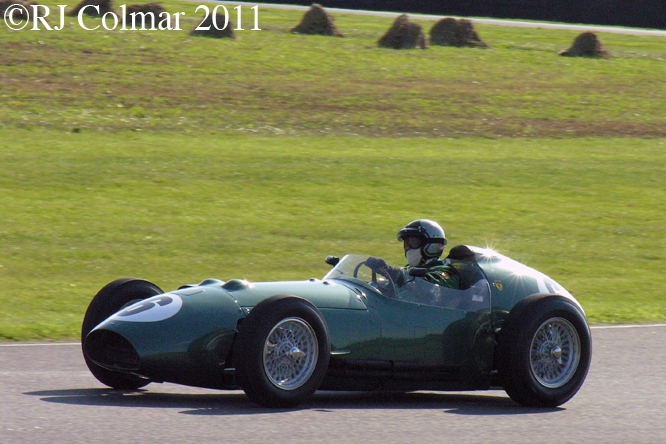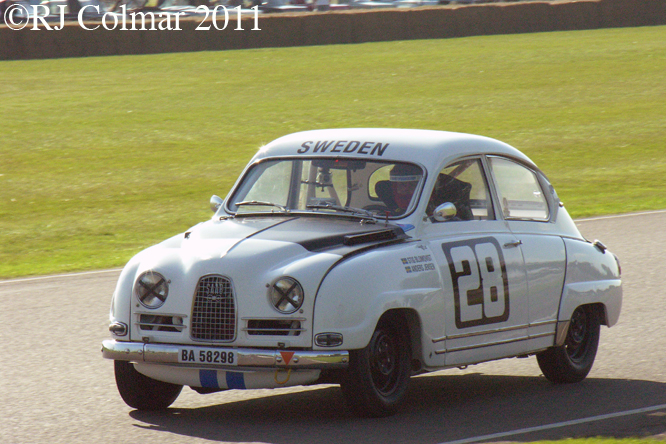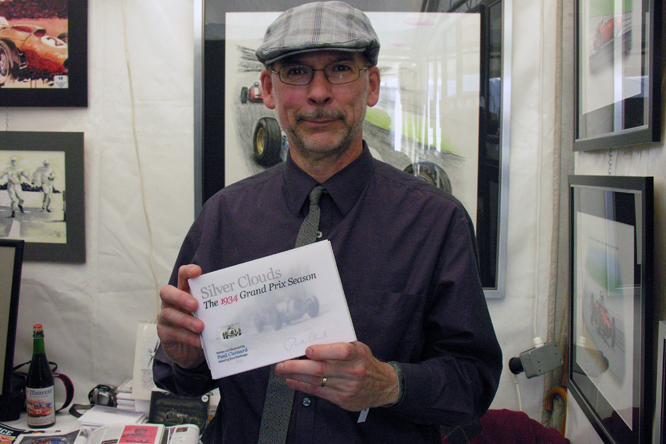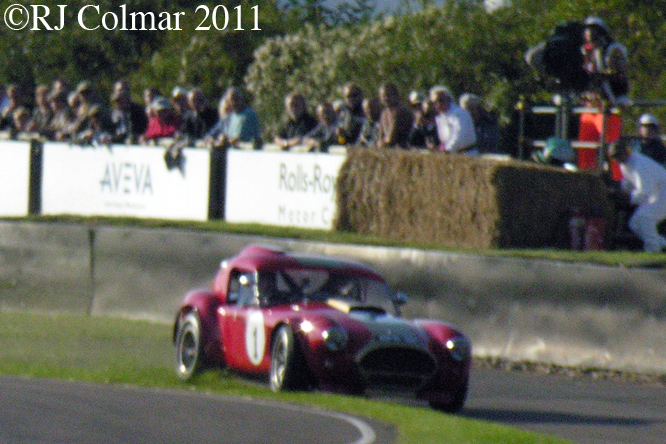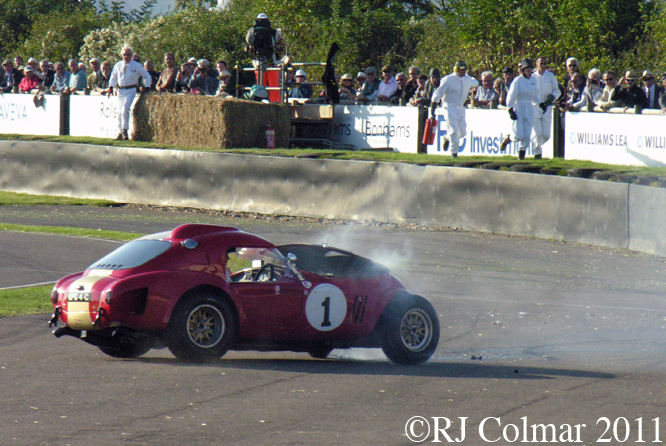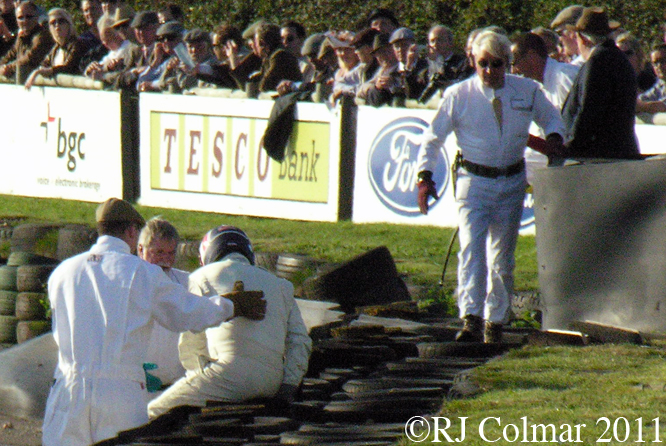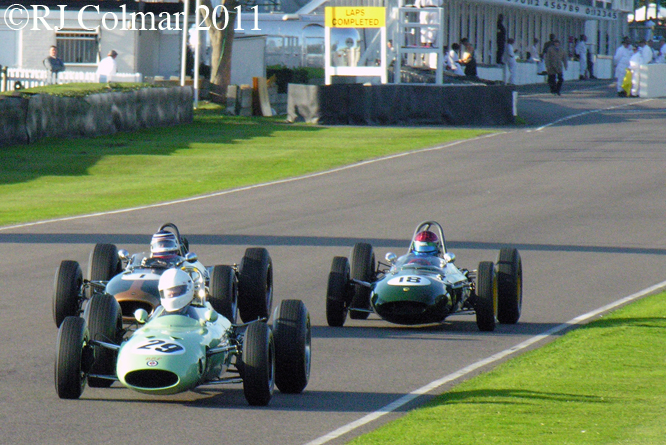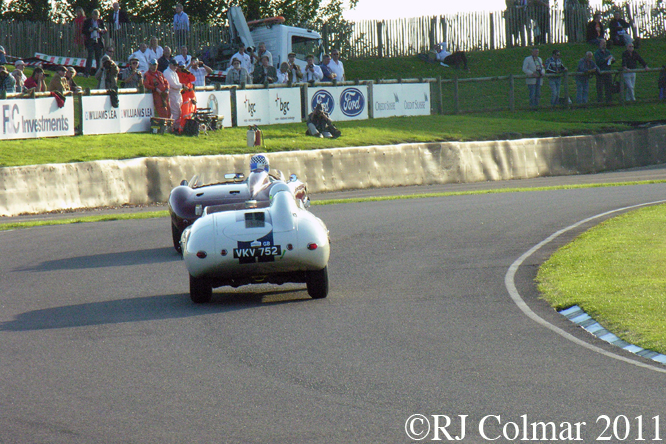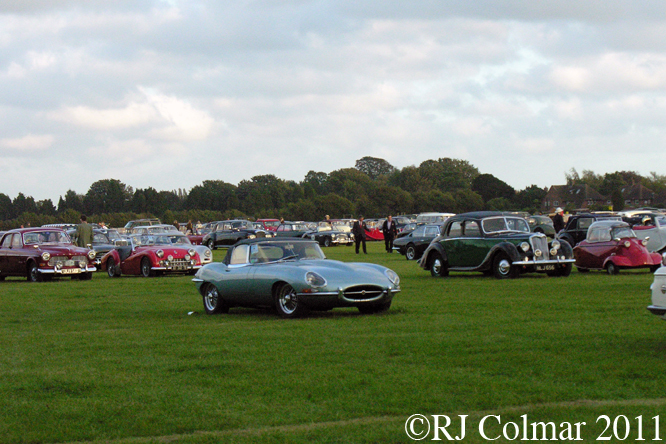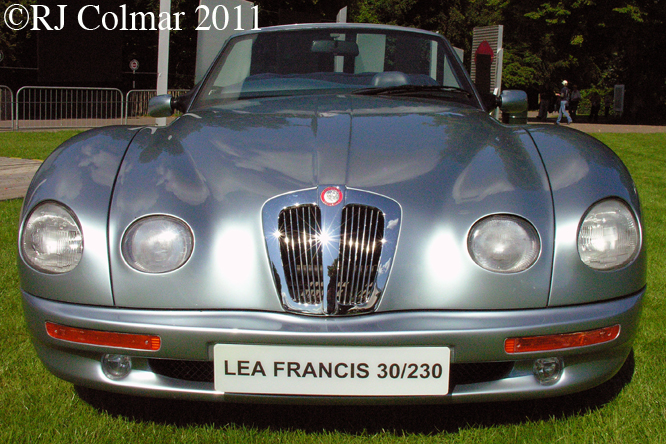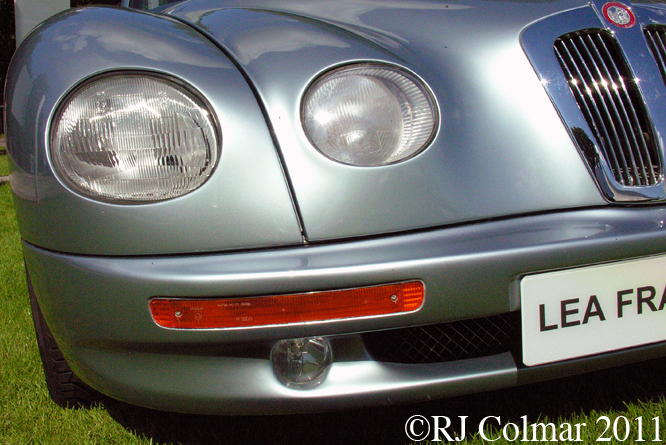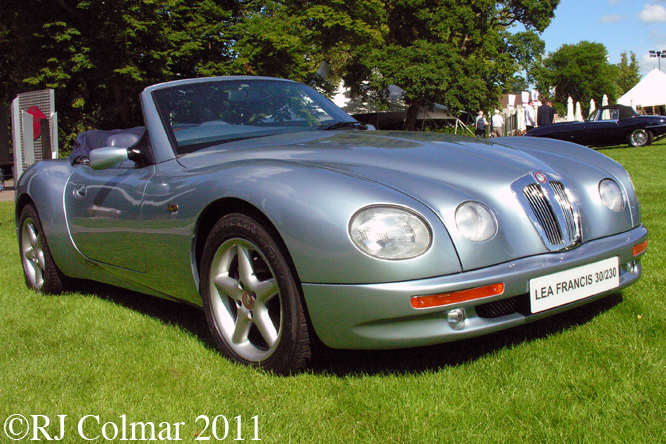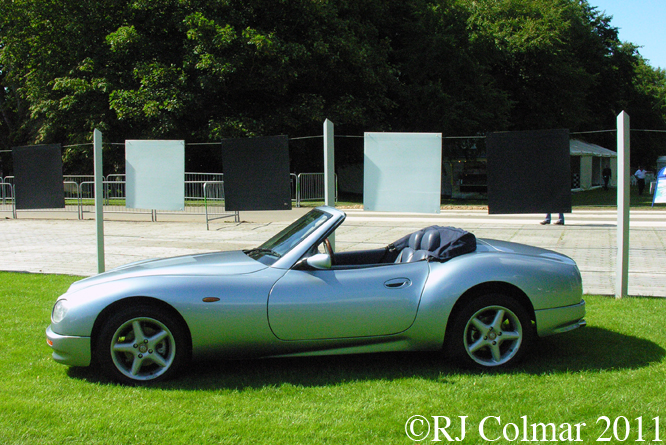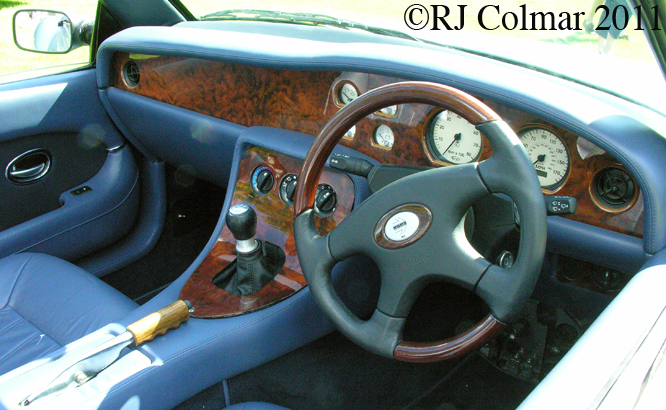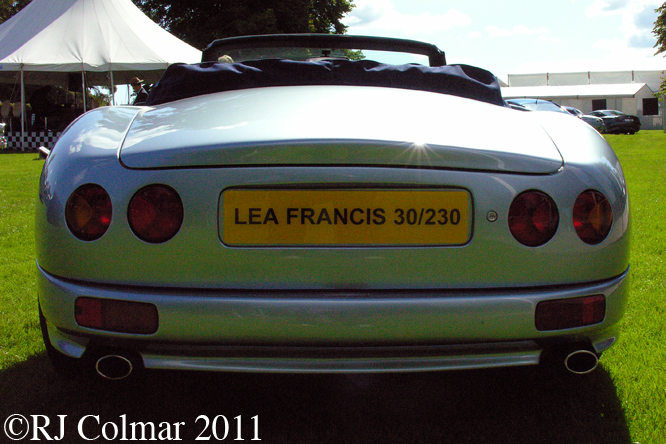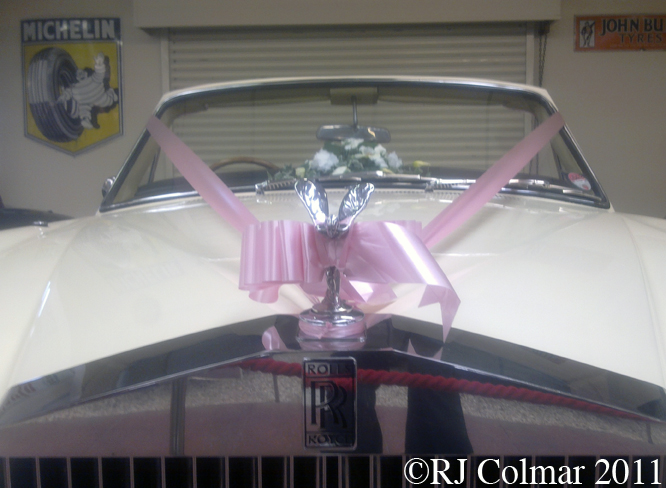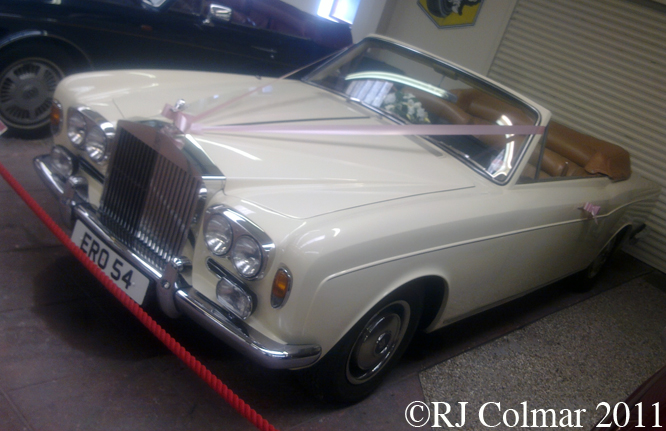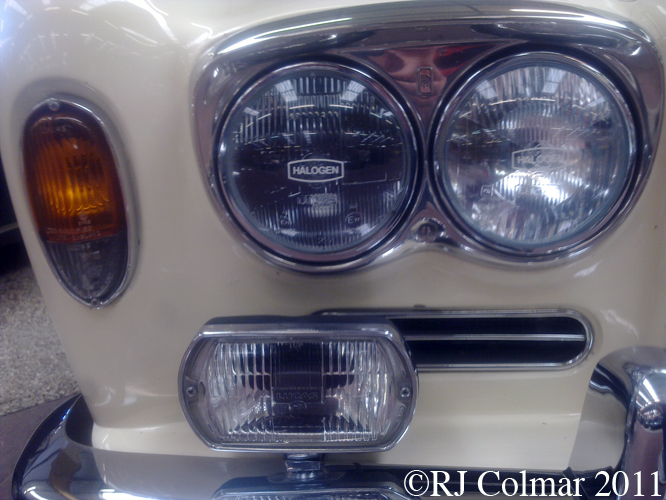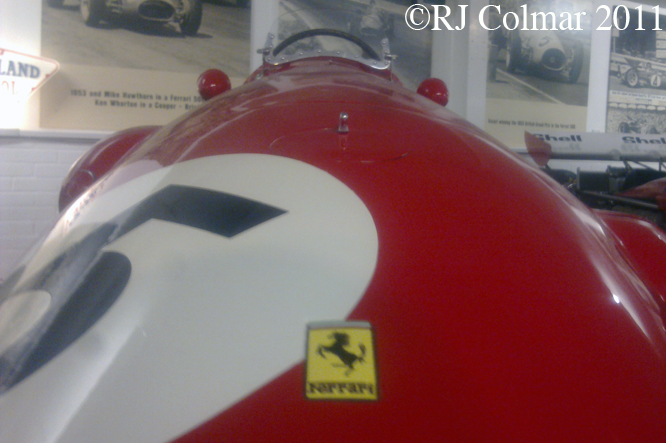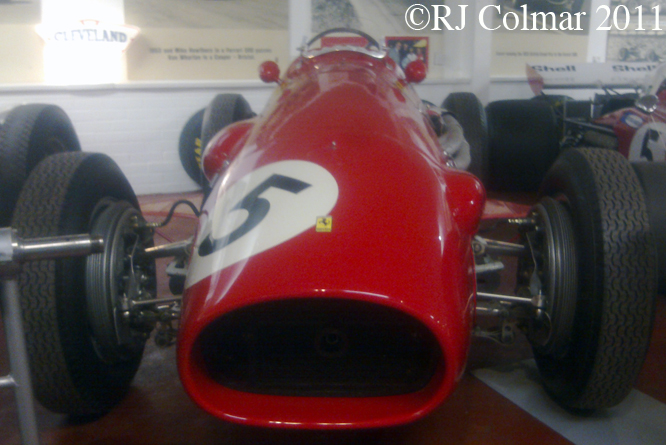Among the many fascinating things to see at the Goodwood Revival last weekend was a fine collection of vehicles and a few drivers from the North American continent here is a small selection of highlights.
I imagine this front wing / fender trim on a 1964 Ford Galaxie 500 serves a double purpose aiding drivers positioning of the car in a tight maneuver.
My vote for Car of the Car Park at Goodwood was this 1964 Falcon Sprint V8 which looks like it has been neglected for a decade or two, more pix of this car next week.
Bonhams offered a fine selection of vehicles at their auction including this 1950 Ford V8 Custom Deluxe ‘Woodie’ Station Wagon Chassis no. BOEG164430, which was imported to the UK in 2009, the vehicle does not appear to have found a new owner.
I have not seen an Edsel before, this 1958 model brought home just how colossal a beast an Edsel really is, well suited to the open spaces of North America but a bit like a duck out of water on Englands winding narrow lanes.
When I was younger I remember being bewildered by the attention to detail of the bright work on some of the 1960’s land yachts, who could fail to be impressed by the jet age rear light cluster of a 1963 Ford Fairlane 500 Sports Coupe.
Probably in the running for the largest vehicle in the Goodwood Classic car park was this 1959 Cadillac 6200 Sedan Flat Top, quite simply an awesome automobile, I can just imagine the Chuck Berry hits pouring out of the radio.
One of several vehicles built in Canada racing at the Revival was this 1958 Sadler Chevrolet Mk3, I am not sure if this was a one off but counting amongst the drivers of a vehicle of this type were Bob Said father of sometime NASCAR racer Boris Said and Eddie Sachs.
This 1962 Kellison J6 drew an instant Wow ! reaction when I saw it lurking behind the start grandstand, another vehicle I had not heard of before, Kellison kit cars were the brainchild of Korean Airforce Vet Jim Kellison, this one based on a Corvette C1 chassis. These cars could be fitted with any US proprietary V8 and drive train. The #905 was used on factory Kellison’s at Bonneville where a best speed of 186 mph was recorded in one of these simple but effective devices.
I am not really a motor cycle man and if I was I’d go for a café racer like the Triton, but this Harley Davidson looks topically cool with its checkered flame tank, rather like the gargantuan Edsel and Caddy 6200 Series probably not the most suitable of machines for the conditions usually found in West Sussex.
Of all of the WW2 era aeroplanes none says speed quite like the P51 Mustang with its Rolls Royce Merlin V12 motor built under license by Packard. I am not entirely sure if this is an airworthy airframe or just for show but it looked the business surrounded by a B-17 and a host of similarly powered Spitfires.
Last time I recall seeing the distinctive red helmet of Rupert Keegan was when he drove the #16 Ultramar Newsweek Lola T610 in 1982. After an ill feted attempt to run in CART with the Machinist Union team in the mid 1980’s the 1979 British Formula One Champion, note not a world title but a national one, completely disappeared from my radar until I saw him driving the #85 1965 Chevrolet Corvair Corsa belonging to Bruce Chapman.
In the same race as the Corvair was the #17 1963 Ford Galaxie 500 pedalled by Kiwi two time winner of the world touring car cup Paul Radisich and owner, seen at the wheel here, Jim Woodley.
Another vehicle coming from Canada was the 1966 Chinook Chevrolet Mk 2. Built in Toronto by Hungarian Canadian George Frejer. The car is seen here in the hands of rapid F5000 exponent Jay Esterer who won the Whitsun Trophy on Sunday.
Ed Hamill appears to have built two Hamill Chevrolet SR3‘s one for himself that started with an Oldsmobile motor and a second one for the Tero Corvette Team for Hamills workshop neighbour Roy Kumnick to drive in 1966. So far as I can tell this is the Roy Kumnick car, now driven by Chris Chiles, which if I am correct features a rounded steel tube frame as opposed to the square steel tube frame Hamill used to build his own SR3.
George Anderson was responsible for the design of this 1965 Wolverine Chevrolet LD65 and it was built by Lee Dykstra who went on to achieve much with the Bob Tullis Group 44 Jaguar programme and in the CART Indycar Series. The Wolverine was driven by Jerry Hanson in the 1966 Can Am series, third owner Frank Opalka had the car painted white in 1968 as it is seen here being driven by Mogens Christensen.
Capable of 186 mph, with a body designed by Peter Brock, the 1964 Shelby American Cobra Daytona Coupé CSX 2300 entered by Daniella Ellerbrock for 1999 Indy 500 winner Kenny Brack and 8 time Le Mans Winner Tom Kristensen, seen at the wheel here, was the second of the five cars finished by Carrozzeria Gransport in Modena. This car le
ased from Alan Mann Racing first appeared painted white with red & blue stipes driven by Bob Bondurant and Jochen Neerpach later to become head of competition at Ford, BMW and Mercedes. The car was repainted in Guards blue when it returned to Alan Mann Racing.
The 1964 #98 AC 289 is the English built variant of the ‘Cobra’, a name that belonged to Shelby before he sold it on to Ford. This one was driven by Kevin Kivlochan and 1998 Indy 500 winner Eddie Cheever. Edit 22/09 Bill P has informed me Kevin’s car is chassis #COB6008, which was originally supplied to Bruce Ropener owner of the Croft Circuit in North East England.
Taking it’s model name from a weepy Hollywood film about a stray mongrel 1959 Balchowsky-Buick Ol’ Yeller II this vehicle is also a mongrel with a Studebacker Champion solid rear end, Buick V8, Buick aluminium drum brakes and a Morris Minor steering rack and white wall tyres more commonly found on station wagons. Max Balchowsky chose all these items for the car drawing on his experience with previous race cars and hotrods. When it held together this inexpensive, $1452.76, sports car driven by the like of Max himself, Dan Gurney, Bob Drake, Bob Bondurant, Carrol Shelby and Jerry Entin, could hold it’s own against Ferrari’s.
My final piece of North Americana is a replica of a 1964 BRP-BRM a British design, faithfully replicated in New Zealand, currently owned and driven by Kurt DelBene who I understand has a day job in Silicon Valley. Great to see someone out racing with one of the more obscure British Formula One manufacturers, helps me to believe that one day I will see the Connew back on it’s wheels and driven with vigour.
My thanks to Tony ‘Giraffe’ Gallagher, Doug Nye, Paul Parker, Jerry Entin, and bill p at The Nostalgia Forum for their valuable contributions to today’s blog.
Thanks for joining me for this North Americana edition of ‘Gettin’ a lil’ psycho on tyres’ I hope you will join me tomorrow for an over view of some of the Ferrari’s at Goodwood last weekend. Don’t forget to come back now !

